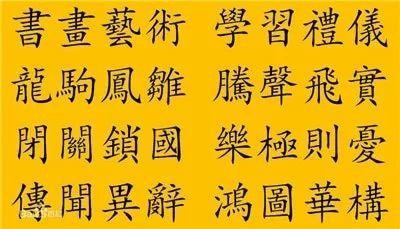Choosing between Simplified and Traditional Chinese can be daunting for aspiring learners. This guide breaks down the key differences, historical context, and practical considerations to help you decide which script is right for your learning goals.
A Brief History of Simplified and Traditional Chinese
Chinese, one of the world’s oldest written languages, evolved from pictograms into a standardized script around the 5th century CE. These characters, known as Traditional Chinese (繁體字 – Fántǐ zì or 正體字 – zhèngtǐ zì), remained the standard until the mid-20th century.
In 1949, the People’s Republic of China (PRC), facing widespread illiteracy, launched a literacy campaign introducing Simplified Chinese (简体字 – jiǎntǐ zì). Simplifying complex characters significantly improved literacy rates, now exceeding 85%. The PRC’s official list includes 8,105 simplified characters.
Key Differences Between Simplified and Traditional Chinese
While both scripts represent the same language, Simplified Chinese generally uses fewer strokes per character. Pronunciation remains largely the same.
Traditional Chinese often retains intricate details lost in simplification. However, not all Simplified characters are easier; some remain complex, like 颧骨 (cheekbone), 幽默 (humorous), and 蘸 (to dip).
Geographic Distribution of Each Script
- Simplified Chinese: Primarily used in mainland China, Singapore, and Malaysia.
- Traditional Chinese: Common in Taiwan, Hong Kong, Macau, and overseas Chinese communities.
Why Learn Simplified Chinese?
- Wider Usage: Encountered more frequently in contemporary materials and online content.
- Easier Initial Learning Curve: Generally considered simpler for beginners due to fewer strokes.
- Access to Modern Resources: More learning materials, including textbooks and apps, utilize Simplified Chinese.
- Relevance for Business and Travel: Essential for interacting in mainland China, a major economic hub.
Why Learn Traditional Chinese?
- Cultural and Historical Significance: Preserves the rich history and artistic beauty of the language. Essential for accessing pre-1950s texts and classical literature.
- Connection to Traditional Arts: Used in calligraphy, classical painting, and other traditional art forms.
- Regional Relevance: Crucial for living and working in Taiwan, Hong Kong, and Macau. Provides deeper understanding of Chinese linguistic evolution.
The evolution of the character for “love” illustrates the cultural nuances embedded in each script.
Encountering Both Scripts in the Real World
Even if you focus on one script, you’ll likely encounter both. University logos often use Traditional characters, while online communication primarily uses Simplified.
Tsinghua University’s logo, for instance, uses Traditional Chinese.
Conclusion: Choosing the Right Script for You
The best choice depends on your individual goals. Simplified Chinese offers quicker initial progress and access to modern resources, while Traditional Chinese connects you to the language’s history and cultural richness. Consider your long-term objectives, intended regions of interaction, and personal interests. Ultimately, achieving true fluency might involve familiarity with both scripts. Consider your personal learning style and available resources when making your decision.

